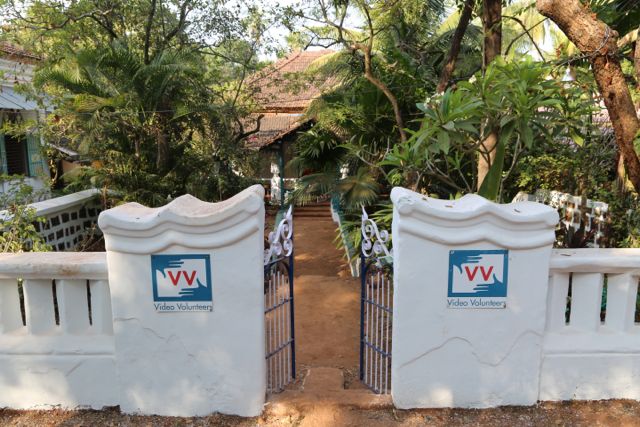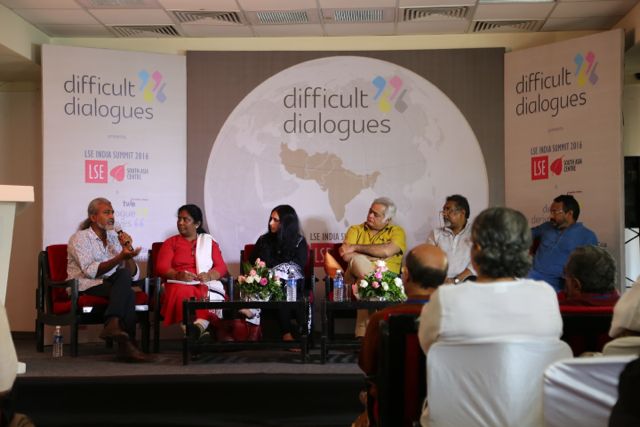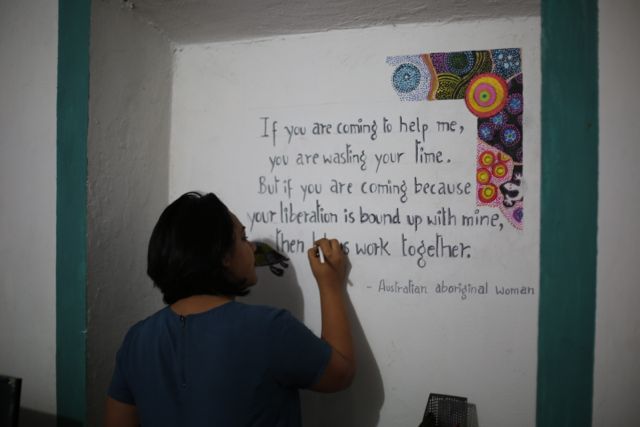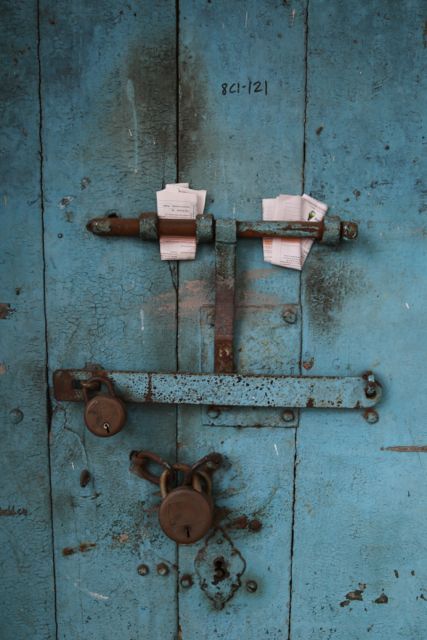I have been in Goa for exactly 24 days and India for nearly a month. Within that time, I’ve nearly filled a journal with notes and made hundreds of photos. My clothes and shoes are covered in red Goan dust from all the roads I’ve traveled getting acclimated, getting down to business and getting lost. On purpose I let myself get lost in India for a bit. It’s been energizing. I’ve had time to reflect on my journey in education, where I am now, and what is on the horizon. Join me through my Fulbright blog in the coming months. I vow to give it my all. Here’s to you J. William Fulbright!
I’ve been connecting with Video Volunteers staff as well as educators from the broader region of Goa, attending events and informational meetings while looking for a house. I boarded in a guest room at Video Volunteers for a week getting to know staff, and during that time a talented artist and activist named Neha Kachrawala painted murals around the office. My family arrived last week, and has been settling in well and we’re enjoying ourselves. Tomorrow we’ll move into a home in the leafy village of Parra, Goa over the hill and a few kilometers away from the city of Anjuna where Video Volunteers is located.
However, when it came to posting info on this blog, I was at a loss for words. I held off from social media, giving myself time to settle in, process and listen. The magnitude of my aspirations for the project set in upon my arrival, especially after connecting with Video Volunteers and other key project educational partners and realizing what a deep resource of knowledge I’m in proximity to in India. I feel very honored and committed to this opportunity but realize it won’t fall in my lap. I write a lot of grants, and love the moments when the written concept evolves into three dimensional action. Some call this the difference between the map and the terrain. You know what I mean. It’s when things get real and the adrenaline kicks in and you feel alive and fallible.
I’ve realized though that when I stay close to Video Volunteers, I end up meeting active world citizens who are affiliated with the “source code” of the the civic engaged curriculum that I’m researching. Not all these people would call themselves educators, but in my mind that is the educator’s craft…orchestrating experiences with people and projects like this that result in intellectual growth and skills that result in tangible accessibility. In order to do that, I think teachers need to reach out more to collaborate outside of the typical boundaries of schools. On a systems level, schools also need to expand their reach. More on this in future blogs. The journey with the students and staff at Gordon Parks High School as a teacher and Curriculum Coordinator has been serendipitous. Working at an alternative school, seeing a racially/economically predictable march of students enter the building confirms for me that we are not done designing schools and learning techniques. I think the irony is that the alternative curriculum of today could be the traditional curriculum of tomorrow. Can a new approach to curriculum that honors local and immediate assets and civic engagement opportunities unlock and allow access to “the instruments of democracy” as I heard Shoma Chaudary say at the Difficult Dialogues conference in Panjim this weekend?
My focus is on civic engaged digital storytelling curriculum. I’ll further disassemble and visualize this process in future blogs. In and around this specific approach to curriculum, I seek to learn from and share with Video Volunteers and translate their best practices and structures to schools that seek to tell their own story, and students who want to interact with authentic audiences on vital topics that simultaneously propel their learning of state standards. Indian educators and educational institutions that train teachers are on this journey as well, and I’m learning a lot from the people I meet, and hope to find the way that I can contribute momentum.






